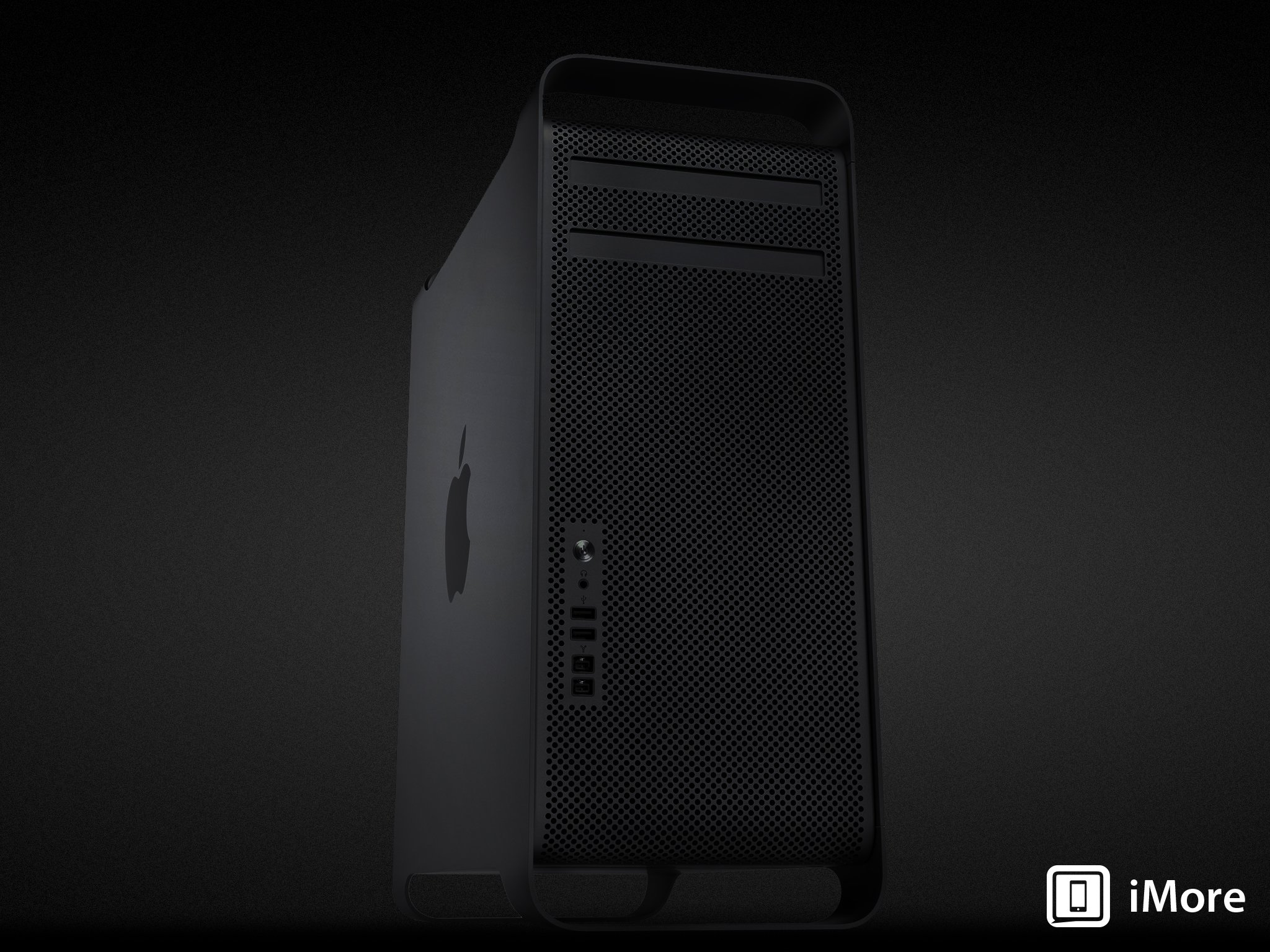Mac Pro: The Next Generation - what's Apple's next heavy iron likely to have inside?

At some point relatively soon, Apple is going to have to put the current Mac Pro out to pasture. What's going to replace it is anyone's guess at this point, but it'd be nice to think that Apple would start with a completely fresh sheet of paper.
After all, the Mac Pro chassis itself dates back a full decade, to the pre-Intel era - it's largely unchanged in appearance from the Power Mac G5, which was first introduced in 2003. No other Mac in the product line has that sort of legacy - all of them have undergone changes over the years, sometimes radical ones.
It's gotten so bad that the current Mac Pro can't be sold in Europe anymore because it falls afoul of recently enacted standards involving the system's power and fan placement. Apple decided simply to pull the existing product from circulation in Europe than bother with a redesign.
One can argue that the Mac Pro's external design is an example of form following function, a core aesthetic value present in so many of Jony Ive's designs. Its tall design helps to accommodate different expansion cards, and provides easy access to internal SATA bays and memory. But the function of a pro-level machine has radically changed in the past few years, so shouldn't a radically different form follow too?
So to understand what Apple might do to the Mac Pro, let's distill what the Pro itself does well and what sort of customer it appeals to. Then let's think about what sort of creation might best serve that market.
It's all about raw horsepower
The one thing the Pro has going for it, even today, is that it is Apple's fastest machine. Look over Geekbench's Mac Benchmarks, for example. In 64-bit mode, seven Mac Pro models dating back to 2010 outclass every other Mac listed, even the fast-as-hell 27-inch iMac that came out late in 2012.
There's no reason to think that Apple's going to offer anything but a super-fast computer as a true Mac Pro. It's built for speed. It uses a workstation-class processor, and even the RAM inside the Mac Pro is built for extra reliability: the Pro uses Error Correcting Code (ECC) memory, typically reserved for situations when data corruption just can't ever be allowed to happen.
iMore offers spot-on advice and guidance from our team of experts, with decades of Apple device experience to lean on. Learn more with iMore!
Obviously, there's a lot of room for improvement. The current Mac Pro is using an older Intel chipset and motherboard design that doesn't permit for faster SATA, USB 3.0 or Thunderbolt. So while the raw computational power of the Mac Pro remains stunning, it's horrifically bottlenecked in a variety of other ways that is boxing the current system into a corner. And that has to change.
What it's going to change into is still anyone's guess. If Tim Cook's email to an incensed Pro user following last year's WWDC keynote is any indication, Apple does have something up its sleeves for professional Mac users later this year - whether that means a third quarter or fourth quarter release is up in the air, and that may affect which Intel processor Apple puts in. Intel has a roadmap planned for later this year with new Xeon processors with more modern accouterments like Thunderbolt, USB 3.0 and more, so my suspicion is that we'll see one of those used inside.
Expandability
One of the key reasons why the Mac Pro is so large today is because it has several PCIe expansion slots. It's conceivable that a future iteration of the Mac Pro may not need as much internal expansion. Thunderbolt is ubiquitous across the Mac platform (except for the Mac Pro), and that effectively pairs a PCIe interface and a mini DisplayPort connector, ameliorating the need for gobs of internal PCIe expansion.
Many of the same vendors who make PCIe expansion cards for Mac Pros offer devices that mirror that functionality in a Thunderbolt-equipped breakout box. It's now possible to achieve broadcast-quality video input and output and use high-speed peripheral interfaces like Fibre Channel and eSATA with Thunderbolt adapters instead of a PCIe card. So the reasons for having a lot of expansion are decreasing.
Thunderbolt even negates the need to install multiple video cards in a Mac Pro - Thunderbolt can accommodate additional displays. As long at our future Mac Pro's GPU is beefy enough and equipped with enough VRAM, it's possible that it wouldn't even need slots for video cards.
If there's a downside, it's that reducing internal expansion and favoring Thunderbolt can make more desktop clutter - a decidedly un-Apple-like approach.
Storage
Apple is excising optical drives from their computer designs: the Mac mini and iMac no longer have SuperDrives, and the MacBook Pros with Retina Displays likewise eschew optical storage. The only Macs left with optical drives are the standard 13- and 15-inch MacBook Pro models and the Mac Pro. Let's accept on faith for a moment that a future Mac Pro will likewise get rid of this capability - that would enable the box to be significantly smaller, as the upper part of the Mac Pro is occupied by space for two optical drives.
One place that the Mac Pro doesn't (and shouldn't) skimp is on internal storage. The current box can accommodate up to four internal 3.5-inch hard disk drives. With current 3.5-inch drives topping out at 4 terabytes, that means you can cram a whopping 16 TB of storage internally on the Mac Pro.
Apple could save a tremendous amount of space and pick up some significant performance by forcing SSD instead of regular hard drives (SSD is, of course, a configurable option on the Mac Pro). But going pure SSD, especially in an easily expandable internal configuration, will cost users a lot of money to configure. I suspect Apple will continue to offer expandable internal storage in the form of 3.5-inch SATA bays; shrinking down to 2.5-inch drives used in laptops would trade off performance and storage capacity.
Take it with a grain of salt or two...
As a long-time Mac Pro owner, I'm hopeful that Apple will continue to support the professional market with a high-end, expandable performance-oriented machine. Whether that's a Mac Pro as we might know it or a radically redesigned machine that offers extreme performance is still anyone's guess.
Based on the current evolution of Apple's product line, it's clear that Apple is moving away from some of the features and functionality that make the Mac Pro what it is today, which suggests that something different will come.
Then again, I may be totally wrong. Apple may stick with the brutalist architecture of the Mac Pro and just replace the CPU and motherboard with a more modern design, slap a few Thunderbolt ports on the back and keep going.
Where do you think the Mac Pro is headed? Will it get a complete makeover, or just a mild update? Or is it bound for the scrap heap all together?

